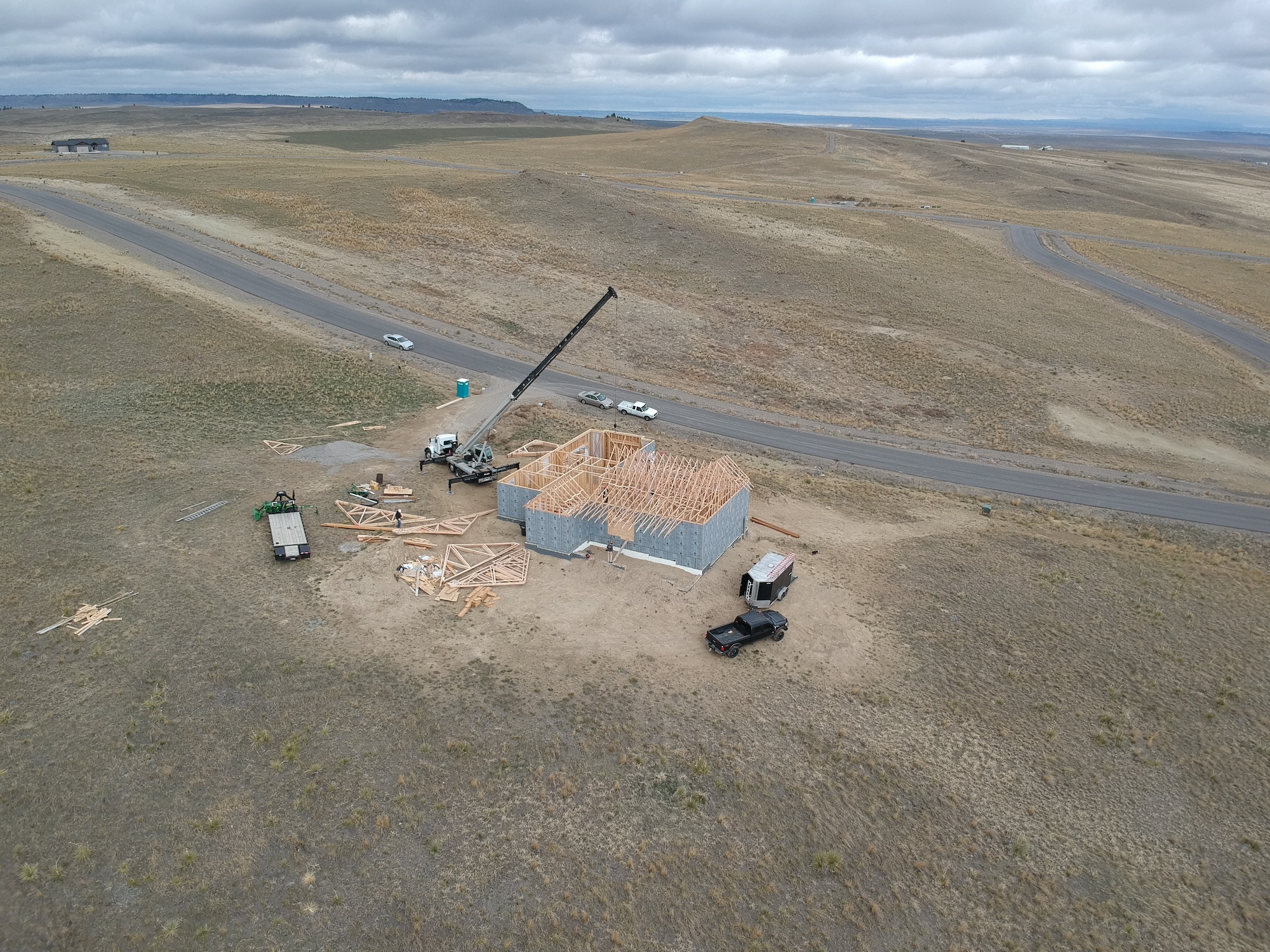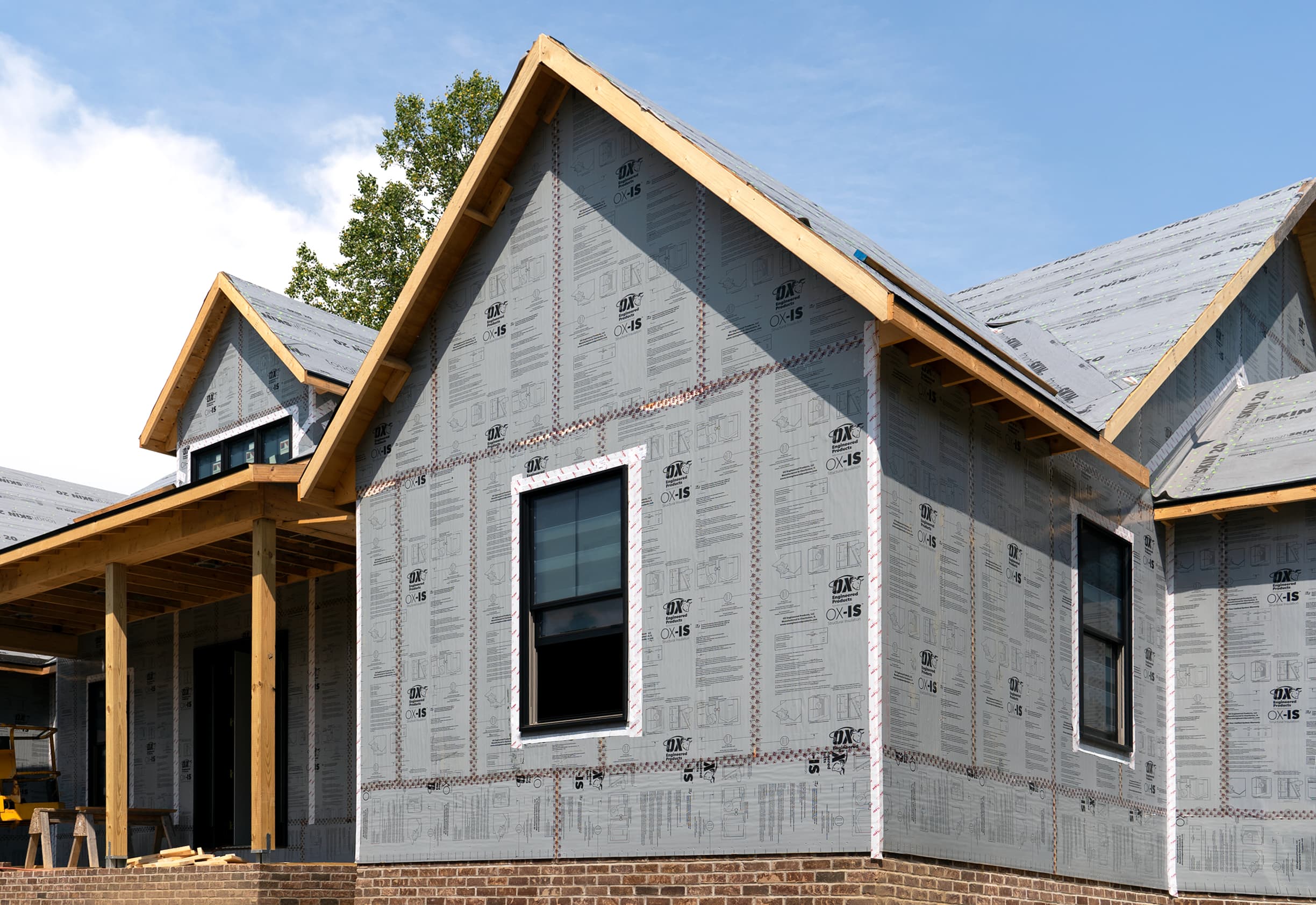In recent years, the construction industry has witnessed a transformative shift with the advent of structural continuous insulation. This innovative approach has redefined the way builders think about putting together an exterior wall, whether they are using traditional sheathing, insulated sheathing, structural insulated panels (SIPs), or another solution.
Today’s advancements in integrated building envelope solutions are contributing to enhanced energy efficiency, durability, and cost effectiveness. This means savings during installation and for the operating cost of both residential and commercial properties.
Regions across the United States have seen a growth in integrated insulation on the exterior of buildings. According to Green Building Advisor, the exterior insulation on the wall can make it perform up to 50 percent better than the same wall without the rigid foam.
When it comes to building envelope construction, few products afford builders the same benefits that integrated insulated sheathing materials do.
Strength in Numbers: Structural Sheathing + Continuous Insulation
Structural sheathing serves as the outer layer of a building’s frame, providing essential support and stability. Traditional sheathing materials such as plywood have long been used, but the rise of innovative products such as insulated sheathing board and SIPs has paved the way for more energy-efficient and resilient construction practices.
Structural continuous insulation, often referred to as insulated structural panels, is revolutionizing the way we insulate and sheath buildings. It involves the use of materials such as OX-IS to create a continuous layer of insulation that minimizes thermal bridging and enhances the overall energy performance of a structure. This approach not only improves insulation quality and longevity, but it also offers structural support, effectively combining two crucial elements in one efficient solution.
How is Insulated Sheathing Superior?
Enhanced energy efficiency: The primary advantage of structural continuous insulation is its ability to create a continuous thermal barrier, reducing heat transfer and improving energy efficiency. Insulated sheathing panels contribute significantly to maintaining a consistent temperature inside the building, reducing reliance on heating and cooling systems. As part of a sustainably built home, they can also help lower HERS scores and assist builders in earning federal tax credits.
Cost effectiveness: Despite initial concerns about the cost of structural insulated panels, the long-term benefits often outweigh the upfront investment. The improved energy efficiency can lead to substantial savings on utility bills over the life of the building. Additionally, the speed of installation reduces labor costs, making it a cost-effective choice for construction project managers.
Durability and structural integrity: Opting for structural sheathing enhances the overall strength and stability of the building. These panels provide robust support and durability, ensuring the structure can withstand environmental conditions, including wind, seismic activity, and extreme temperatures.
Common Questions
Construction professionals who might be new to integrated products often have questions regarding the selection of insulated sheathing and the advantages of structural versus nonstructural versions.
- Is continuous insulation structural? Continuous insulation, in its standalone form, lacks structural properties. However, it is deemed structural when featured in integrated products such as structural continuous insulation.
- What is the best form of insulated sheathing? Selecting the best continuous insulation involves considering various factors to ensure optimal performance and energy efficiency for a specific project. Considerations include climate, construction type, long-term needs, and more.
- What are the pros of SIP panels? Structural insulated panels offer continuous insulation, structural strength, quick installation, and long-term performance.
- How do you install insulated sheathing? Installing insulated sheathing typically involves attaching the panels or boards to the framing of the building and ensuring panels are properly sealed using seam tapes. Proper installation techniques vary depending on the specific product, so following manufacturer guidelines is crucial.
- What is structural sheathing vs non-structural sheathing? Structural sheathing provides both support and insulation, contributing to the building’s structural integrity. Non-structural sheathing, on the other hand, focuses solely on providing a substrate surface for attaching insulation, weather barriers, and exterior finishes.
A Lasting Impact
The adoption of integrated products such as structural continuous insulation is transforming the way that buildings are being designed and constructed. With a growing emphasis on sustainable and environmentally conscious practices, continuous insulation solutions are helping buildings meet stringent energy codes and the standard for 21st-century construction.
Structural continuous insulation has emerged as a transformative option in modern construction, offering a holistic solution for both insulation, sheathing, and even weather barrier challenges. Products such as OX-IS or other insulated sheathing products are changing the landscape by promoting energy efficiency, cost-effectiveness, and durability. As the industry continues to explore innovative materials and processes, structural continuous insulation is poised to play a central role in shaping the future of construction.


